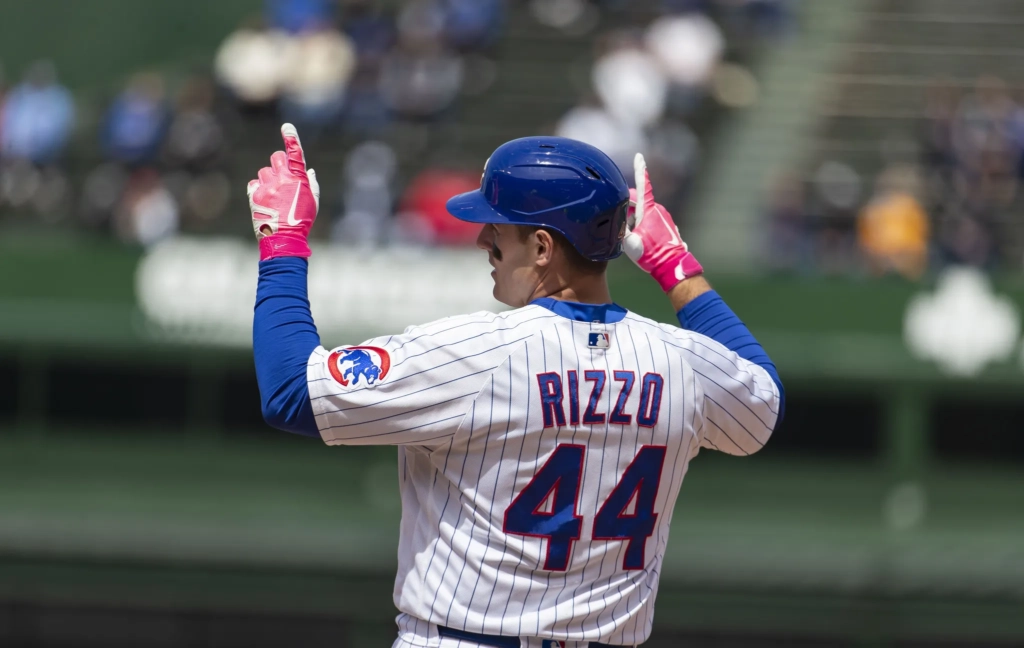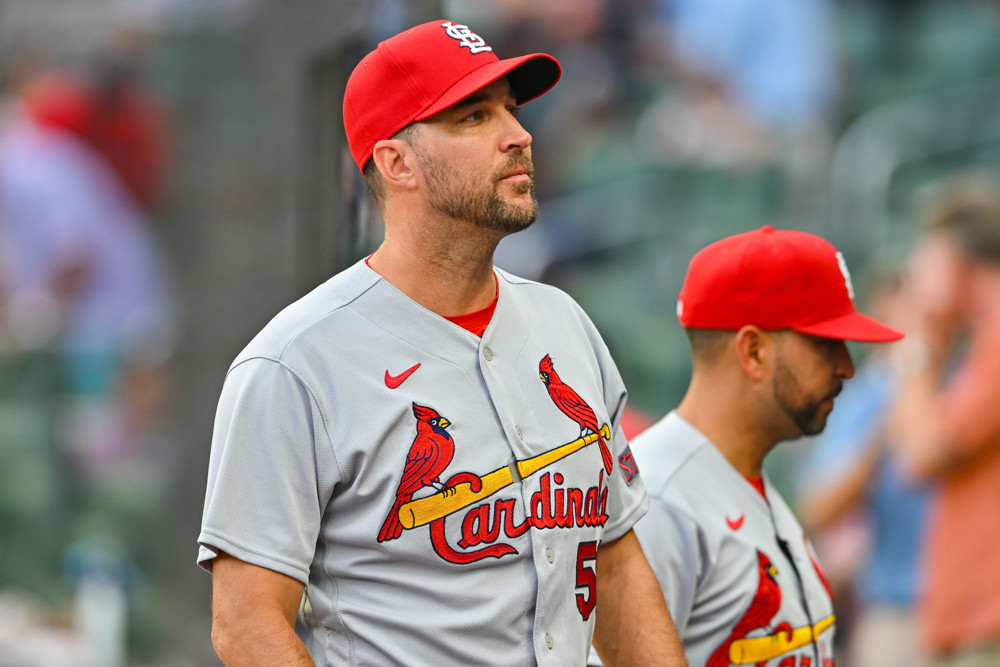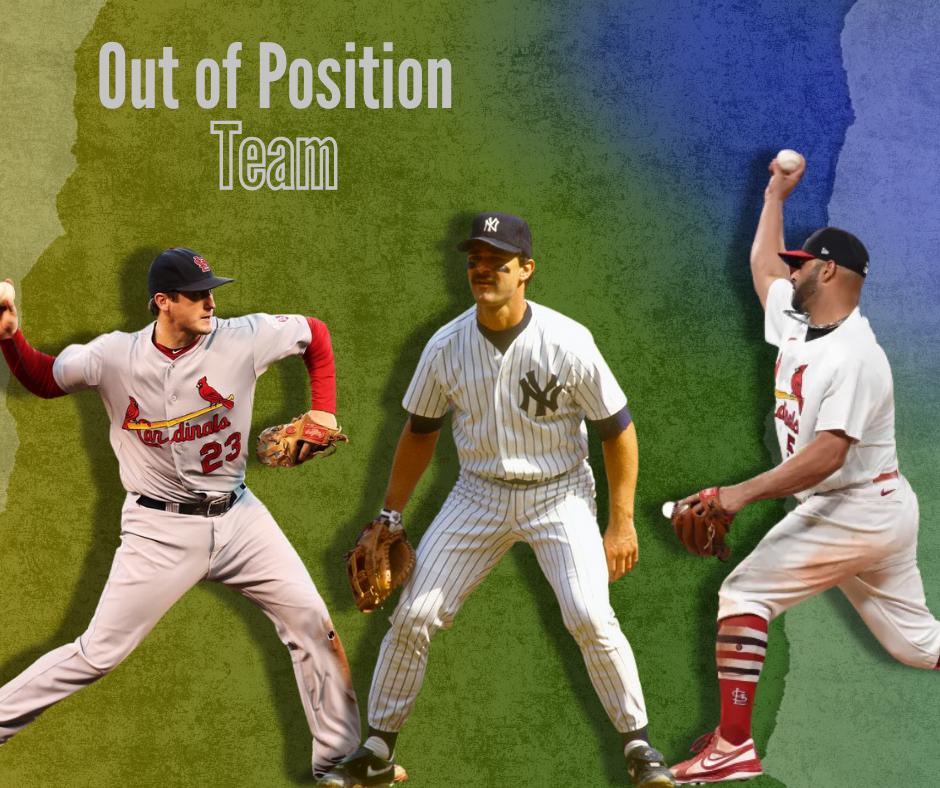At The Fringe, we love exploring the odd and overlooked corners of sports history. The moments that do not make highlight reels but live on through trivia questions, Reddit threads, and scorekeepers’ nightmares.
This article is a tribute to those moments. We present the All-Time Out of Position Team, a full roster of players who found themselves in roles they were never truly meant to play. Some were placed there by necessity. Others were victims of managerial chaos. A few made career-altering transitions. We have filled every position on the field, added a utility player, and selected a manager and an owner to round out the strangest lineup in Major League Baseball history.
Catcher: David Freese
Freese, the 2011 World Series Most Valuable Player, was a hometown hero and fan favorite in St. Louis. Known primarily for his bat, he played more than 99 percent of his career games at either first or third base. But early in his career, Freese also served as an emergency catcher, one of the rarest unofficial roles in baseball.
He did not grow up playing the position. In the Padres’ farm system, Freese was blocked at third base by top prospect Chase Headley. As a workaround, the team had him practice behind the plate. That plan never materialized, and when the Padres traded him to the Cardinals for Jim Edmonds, Freese returned to third base. With Yadier Molina entrenched as the everyday catcher in St. Louis, Freese’s catching days appeared to be over.
But baseball is a game of weird timing.
In the final regular season game of 2009, Cardinals manager Tony La Russa cycled through his bench in the late innings. He used Molina as a pinch hitter in the eighth. Then, in the tenth inning of a tie game, the Cardinals had no catchers left. La Russa turned to Freese, who caught for the first and only time in his Major League career.
First Base: Yadier Molina
Yadier Molina, arguably the greatest defensive catcher of his generation, spent a surprising amount of time at first base. He played 48 games and 111 innings at first, compared to over 18,000 behind the plate. He started only five games there and completed just two.
Although the sample size is small, the results were underwhelming. Molina posted just 3 Defensive Runs Saved per 1,200 innings at first base, compared to 11 per 1,200 innings as a catcher. Still, his leadership and bat kept him in the lineup wherever necessary.
Second Base: Anthony Rizzo

Rizzo has played second base in 15 games. That may sound bizarre, but it is technically true. During Joe Maddon’s tenure as Cubs manager, he occasionally used an unconventional shift in bunt situations. Rizzo would move about seven feet to the left of the pitcher, while the second baseman covered first. Some umpires required the Cubs to declare Rizzo as the second baseman on those plays.
The result was a strange but legitimate record. Rizzo gained second base eligibility in fantasy leagues, becoming one of the most versatile and valuable players in that format.
Shortstop: Albert Pujols
Before becoming a legendary first baseman and designated hitter, Pujols was surprisingly versatile. He spent time at third base and in the outfield during his first few seasons. And once, he even played shortstop.
On April 15, 2002, the Cardinals faced the Braves. Pujols started in left field but was moved to shortstop in the seventh inning. It was the position he played in high school and college, but he had never played it in the majors. He went 3 for 5 with a triple and two runs batted in. No balls came his way during the two innings he stood at short. It was the only game he would ever appear at that position.
Third Base: Don Mattingly
Don Mattingly was a left-handed thrower, but he was also ambidextrous and threw right-handed as a child. Early in his Yankees career, he made appearances at both second and third base.
The most notable stint came during a road trip in 1986. With injuries depleting the infield, manager Lou Piniella asked Mattingly to play third. Mattingly agreed and continued to throw left-handed. In his first appearance there, he started a double play and recorded four assists. He would play two more games at third over the next few days, starting one of them.
Even though his time at third base is well known, his performance makes him a perfect representative of baseball’s occasional disregard for positional logic.
Left Field: Randy Johnson
This one is pure novelty, and that is what makes it great.
On October 3, 1993, during a meaningless game against the Twins, Mariners pitcher Randy Johnson asked Lou Piniella if he could play the field. Johnson wanted to play first base, but because Dave Magadan was due to bat, Piniella sent Johnson to left field instead.
He stood in left for one inning. Nothing happened. It remains a fun footnote and technically makes him the tallest position player in Major League Baseball history.
Center Field: Walter Johnson
Walter Johnson is one of the most dominant pitchers in baseball history. He finished his career with 110 shutouts, a 2.17 ERA, and 167 wins above replacement. He could also hit. He retired with a 76 OPS plus, just six points behind Hall of Famer Luis Aparicio, and had 142 career pinch-hit appearances.
On October 4, 1913, the Senators faced the Red Sox in the final game of the season. Manager Clark Griffith decided to have some fun and started Johnson in center field. Later in the game, Griffith moved Johnson to the mound. Johnson gave up two hits, then moved to second base. A catcher came in to pitch and allowed both runners to score. Johnson’s ERA for the season rose from 1.09 to 1.14, costing him the record for lowest ERA in a 300-inning season. Bob Gibson still holds that mark with 1.12.
Despite the hit to his legacy, Johnson had two doubles and two stolen bases that day and won the Most Valuable Player award that year.
Right Field: Rick Ankiel
Rick Ankiel’s story is one of the most remarkable transformations in modern baseball. He began his career as a pitcher, only to develop the yips. He could no longer throw strikes consistently. After a brief hiatus, Ankiel returned as an outfielder.
In 2007, he re-debuted as a position player and hit .285 with a .535 slugging percentage in 47 games. He played for six teams over the next six seasons. His best defensive position was right field, where he saved seven runs in just 90 games. While it may feel like he no longer qualifies as out of position, his journey makes him an essential member of this team.
Designated Hitter: Adam Wainwright

Adam Wainwright was one of the better hitting pitchers of his era, tallying 10 home runs in his career. But his appearance as a designated hitter in 2023 was about sentiment, not stats.
In his final series, Cardinals manager Oli Marmol gave Wainwright two pinch-hit appearances. One of those came in place of the designated hitter. It was a touching moment and a nod to a player who spent nearly two decades with one franchise.
Starting Pitcher: Roy Campanella
Roy Campanella is a Hall of Famer, a civil rights icon, and one of the greatest catchers in the history of the game. What is not as widely known is that he also pitched.
In 1945, while playing for the Baltimore Elite Giants in the Negro Leagues, Campanella made two starts. He pitched 15.1 innings and gave up nine earned runs. His ERA was 5.28, but his underlying numbers were much better. He had a 2.83 fielding independent pitching, a 2.7 strikeout to walk ratio, and a 23.9 percent strikeout rate.
Why he never pitched again is unclear. But even a brief moment like this deserves to be remembered in a career as impactful as Campanella’s.
Utility Man and Captain: Bert Campaneris
Only five players have ever played all nine positions in the same game. Bert Campaneris was the first to do it, and his version is the most chaotic of them all.
On September 8, 1965, as part of a promotion dreamed up by A’s owner Charles Finley, Campaneris played every position in a single game against the Angels. The Angels were not happy to be part of a publicity stunt.
Campaneris rotated one position per inning. He started at shortstop, moved to second, third, left field, center, right, first base, pitcher, and finally catcher. In right field, he dropped a routine fly ball. On the mound, he walked two batters and gave up a run before recording a strikeout. Behind the plate, things escalated.
With the A’s trailing by two in the ninth, Ed Kirkpatrick tried to steal home. Campaneris held onto the ball for the out but was sent flying by the collision. He had to be restrained from retaliating and later went to the hospital with a shoulder injury.
He did not play in extra innings. But he had already completed the challenge and made baseball history. For that, he wears the captain’s badge on this team.
Manager: Ted Turner
Ted Turner, the founder of CNN and owner of multiple Atlanta franchises, once decided to manage the Braves himself.
In 1977, after a 13-game losing streak, Turner told manager Dave Bristol to take a break and named himself manager. He suited up and took the field on May 11 in a game against the Pirates. The Braves lost 2 to 1. Commissioner Bowie Kuhn ruled that Turner was not allowed to manage again due to lack of experience.
He managed one game and lost. Still, it remains one of the oddest managerial appearances in Major League history.
Owner: Charles Finley
Charles Finley was a showman, an innovator, and a lightning rod in baseball history. From colored uniforms to wild promotions to letting Campaneris play every position in one game, Finley believed in fun.
Baseball has always been a little weird. That is part of its charm. And no owner leaned into that more than Finley. For that, we give him the final spot on this unforgettable team.
Parting Shot
That’s the squad. Call it a starting nine, call it a history lesson, or call it a hot take. Just don’t call it boring.
Consider yourself fringed.




